K.A. Barker's Blog
August 21, 2014
Making the move to tumblr!
Yes, that’s right – I’m doing something I never thought I would and starting a tumblr account. I’ll do most of my blogging on there from now on, so please feel free to check out k-a-barker.tumblr.com, where I’ll no doubt be rambling about writing, books, and how much I want to set my manuscript on fire.
July 15, 2014
Proofreading101: How To Stay Sane
It’s no secret that I’m not exactly proofreading’s biggest fan. I get why it’s important but that didn’t stop me from wanting to pluck my eyes out with a rusty spoon during the process. So I thought I’d put together some tips from what I’ve learned as I proofread The Book of Days. Hopefully they’ll help to keep your squidgy bits safe from any kitchen utensils.
1. Read backwards.
It may sound stupid, but it really does help you to focus on each individual word instead of the flow of the paragraph. It’s easy to get into a trance as you read – especially if you’ve gone over the paragraph many times before in previous drafts – and forcing yourself to slow down and read each syllable increases your chances of catching a dreaded typo.
2. Take lots of breaks.
Close work like proofreading strains your eyes something chronic. If you don’t want to turn into a gibbering mess with a thousand yard stare, then make sure you do eye exercises every 30 minutes (these can be as simple as looking at the wall or out at the garden – anything to vary the distance you’ve been looking), and don’t do more than two or three chapters at a time. You’ll end up missing more than you catch and have to re-do it.
3. Don’t try to catch every mistake at once.
Although you might be tempted to get it all over with in one pass, you’re going to miss things if you don’t narrow down your focus. Read it once for grammar and punctuation, again for stylistic issues (similar words/phrases being repeated too closely, which was the BANE of my proofreading life), and once more for plot problems (it was raining before it started to rain in my novel, for example). Only by separating each issue will you fully be able to give your attention to it.
4. Don’t dwell only on the negative.
Trust me, when you’re proofreading, it’s amazingly easy to look at all the mistakes you’ve spotted and feel like the biggest failure that ever failed. You’re combing through your text with a fine-toothed comb, looking for problems… it’s natural that you’re going to feel like you’ve done a bad job as a writer when you find them this late in the game. But you know what? By taking such care in your work, you’re also being the best writer you can be. You’re getting rid of these problems now so that you can send your little manuscript out into the world with its shirt tucked in, its face clean, and its patent leather shoes shining in the sun. There’s nothing more loving you can do for your work. In addition to looking for the problems, make sure to spend some time going over bits of writing that you love – a great description or a cracker action scene. Balance is important in keeping sane.
5. Read aloud.
You’d be amazed how much easier it is to check things like flow and sentence length when you’re reading out loud. Phrases that might seem perfectly fine when you glance over them on the page will suddenly jump out at you as clunky. Ideally, you will have done this during your line editing phase, but it’s always good to do another read-through just to make sure everything is peachy keen.
6. The dictionary is your friend. It never lies.
If you think you’ve misspelled something and Word’s squiggly line feature isn’t picking it up, go to the source: the dictionary. In my manuscript, ‘crenulations’ managed to get through three different lots of line editing and proofreading. I almost managed to talk about a fabric formed by metamorphic rocks when really all I wanted was a wall with battlements. Learn from my mistake – don’t suddenly veer off into geography when you think you’re writing fiction.
7. And this is probably the most important one… don’t stress!
There are going to be mistakes that you won’t pick up. I think that my editors and I did a pretty good job of proofreading The Book of Days, but I bet you a pack of skittles that the moment I first crack open the book, I’ll find a big fat typo. You’re not perfect. You’re not going to catch everything. But that’s okay. The rare typo is like an Easter egg in DVDs – it makes the spotter feel superior for finding it. So just know that you’ve done the best proofreading you can and learn to love the emails from readers who’ve found mistakes. There’s always next time…
July 7, 2014
Top Ten Tuesday: My Bookish Confessions

This week’s Top Ten Tuesday is all about bookish/bloggish confessions. Check out the host, The Broke and The Bookish, for some of the other great confessions. Here are mine:
1. The smell of old books makes me want to gag. There’s probably some librarian version of the Winter Soldier about to plug me for saying this, but I just can’t stand how old books smell. I will huff a new book to my heart’s content, but old books smell of earwax and moths and mould. No thank you.
2. I buy (and then don’t finish) way too many books. I’m totally addicted to buying books. I dart about like a five-year-old on pixie sticks with the topics that interest me – Empress Dowager Cixi! Women in World War 1! Fairytales! – and then the sugar wears off and my interest wanes, and I’m left with a pile of guilt books looking at me accusingly. Someday I’ll finish them all.
3. This one’s related to both 1. and 2., but library books kind of creep me out. Libraries are such great resources that I feel bad admitting this, but I don’t really use them any more because the thought of how many people have probably wiped their noses on the books (or worse) sends a shiver down my spine. I’m a tiny bit of a germaphobe.
4. Categorisation – what’s that? I’ve already admitted this before, but I have absolutely NO system when it comes to storing my books. You are more likely to find an Elizabeth Gaskell novel next to The Adventures of Snugglepot and Cuddlepie than you’re likely to find alphabetisation.
5. My dust covers never last longer than a day. I find hardcovers inconvenient enough to read without having to navigate a slip of paper that seems to take a gleeful pleasure in slipping out of the book and smacking me in the face. There is definitely a relative of the sock monster behind my bookcase that’s making a nest out of all my discarded dust covers.
6. Sometimes books make me tired. I’m reading Fairytales for Wilde Girls at the moment and the prose is so beautiful that I have to read everything twice and, consequently, haven’t gotten far at all. These sort of books feel to me like a rich dessert – I can have them in small doses, but anything larger and I’m likely to find myself hovering over the literary equivalent of a toilet rim.
7. I like to read at least three books at once. One is generally fiction, one historical biography, and the other could be anything from the history of swearing to Nineteenth Century housing plans. I’m easily changeable, so it’s good to have more than one book on the go.
8. Studying Creative Writing in uni has ruined me for certain capital L Literature. I’m sure there are thrilling new books about the inner monologue of an urban 35-year-old man desperately clinging to his youth and sexual prowess, but I’m not reading them because I had to write papers on so many of them. I’ve done my time.
9. Occasionally, when I’m having a bad day, I’ll make a warm drink and crack open books from my childhood. Nothing soothes like the grand adventures of Milly Molly Mandy, Roald Dahl, The Adventures of the Wishing Chair, Five Children and It, and Treasure Island.
10. I judge books by their covers. If, on the bus, it’s going to make me look like a) a toddler b) a pervert or c) the kind of person who reads Ancient Tax Laws of the Sumerian World for fun, then it’s staying on the shelf.
June 24, 2014
The Book of Days cover reveal and sweet, sweet giveaway
Yay! Today’s the day. I get to show off my lovely cover and give away some goodies at the same time… the best of both worlds!
To celebrate the cover reveal of The Book of Days, I’m giving you not one, not two, but three ways to win some awesome swag:
1. Let me hear your dulcet chirps as you spread the news on twitter. Talk about The Book of Days, its sweet cover, the giveaway. Heck, you can even mention that I’m the world’s worst shower singer for extra brownie points. Make sure you include my handle in the tweet (but not at the beginning!) or I’m not going to be able to see your amazing 140 characters.
2. I’ve got seven lovely blogs covering my cover reveal (ew, bad pun). Just so that I’m not making you see the same cover in seven different places, I’ve asked a different question on each of the blogs. Once you’ve answered the questions, email me your answers at k.a.barkerwrites [at] gmail [dot] com for a chance to win a prize.
3. My blog is gathering tumbleweeds. It’s making me cry harder than those creepy 1970s pictures of kids crying, but you can help me. Check out my articles, leave a non-spammy comment, and you’ll enter into the draw to win a prize. Bribery… what’s that?
And what’s the super awesome amazing no-holds-barred prize?
The lucky tweeter, question answerer, and commenter will each win:
1. A signed copy of The Book of Days when it’s released in September.
2. A $30 gift voucher to the bookstore of your choice so you can feed this strange reading addition.
3. A hug, to be delivered either a) bone-crunchingly hard, or b) awkward family reunion.
Now on to the important things (if anything can be more important than books and/or money to purchase shiny books). The blogs doing the cover reveal are:
Laura Plus Books
I’ll be updating with links to their posts once they’re up. I’d like to thank them once again for agreeing to host my cover reveal and say publicly that they are all ladies and scholars, and that unicorns and carebears will undoubtedly follow them for the rest of their lives.
So I hope you all enjoy!
June 23, 2014
Shinies!: some of my favourite book covers
In honour of tomorrow’s cover reveal for The Book of Days, I thought it might be fun to have a look at some covers that turn me into a drooling mess.
The Split Worlds: Any Other Name by Emma Newman
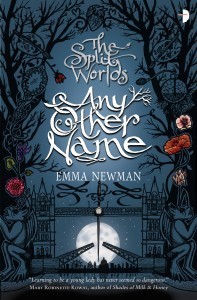
This cover has everything: illustration, intrigue, gargoyles. I love how the branches morph into items that I’m guessing are significant to the story. Also, those splashes of colour against the silhouetted trees and the deep blue/grey of the background are to die for.
Siege and Storm by Leigh Bardugo
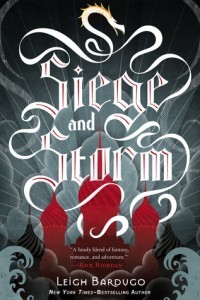
Russia! If I didn’t know anything else about the book, just one glance at the cover would let me know that this fantasy is going to have flavours of the Motherland. And that’s exactly what a great cover does – it lets prospective readers know what they’re in for before they even crack open a page.
Plus: fancy typography. It’s a weakness of mine. How cool is it how the ends of the letters wrap around the palace and turn into the dragon at the top! The fierce red of the palace and in the title stands out well against the brooding sky.
All in all, you know something big is about to go down.
Love in the Time of Global Warming by Francesca Lia Block
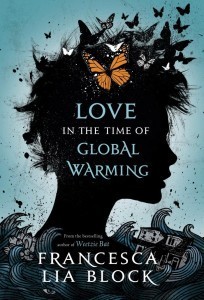
You’re probably seeing a pattern here with the book covers I go gaga for. If it’s illustrated, I’m going to want to lick it. And this is a particularly good example of how effective illustration can be. From the lovingly detailed waves at the bottom to the butterflies emerging from the silhouetted face, every tiny bit of this book cover just works.
Also, it’s interesting how plain the actual title is. Because when you have such a gorgeous cover, you don’t need to gild the lily. Plus how cool is that single eye near the bottom!
The Night Circus by Erin Morgenstern
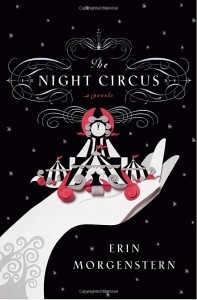
This is a perfect example of how an almost monochrome cover can still pack a hell of a punch. The beauty comes from its simplicity. It also lets the red really POP. I just love how the circus seems to be made out of paper and pasted onto the cover. And the little curlicues hint at the novel’s Victorian setting. Also, and this is silly, but including ‘a novel’ lets me know what sort of a read I’m in for. I may be wrong, but I’ve only ever seen ‘a novel’ on Literary books. It adds a touch of class that fits in perfectly with the rest of the cover.
Plus I have to love it because it’s got stars on it and so does mine. Star-covers have to stick together.
And just to prove that I’m not a complete illustration nerd, here’s a couple of examples of covers with models in them that I never want to stop looking at:
Daughter of Smoke & Bone by Laini Taylor
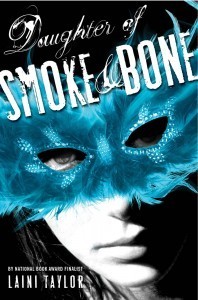
Where do I start? That unbelievably amazing blue mask? The two different fonts for the title that somehow manage to work perfectly together? The way the model looks like she hasn’t made up her mind whether she wants to kill me or eat me?
Stunning. Just stunning.
The Unbecoming of Mara Dyer by Michelle Hodkin

I have such mixed feelings about it. I should hate it: the girl is suffering from the all-too-common Decapitated Head Syndrome; the title font is too thin to be perfectly readable over the models’ clothes; the background colour is dingy.
And yet… and yet…
IT’S JUST SO PRETTY.
I don’t know whether it’s the intriguing title, the sense of menace generated by the drab colours, or that gorgeous dress, but something about this cover draws me down into the dark, dark ocean.
EDIT: The indomitable Gretchen shared her favourite covers in the comments and they were so gorgeous I had no choice but to share them:
The Chaos of Stars by Kiersten White
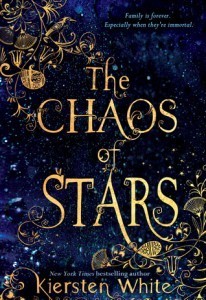
The Boundless by Kenneth Oppel
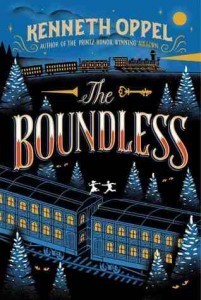
Wow. Just wow.
Well there it is, as the emperor of Austria said. I’ve shown you a couple of my favourite book covers and I hope you’ll join me tomorrow when some amazing blogs will be helping me to reveal the cover of The Book of Days.
June 3, 2014
An honest look at self-doubt
Doubt. It’s this crippling fear that sneaks in between the cracks and strikes when you’re least expecting it – in the middle of the night, after a great writing session, when you’re making toast.
I’ve been going through a weird kind of stage in my writing. I’m proofreading at the moment, which means going over the text with a fine tooth comb, looking for typos, the stray missed comma, the repeated word. Basically, if a structural edit is the artillery, proofreading is sending in the soldiers to check the remains. And as I’m studying my own writing so closely, I’m discovering more and more not to like about it. Sentences seem clunky in my eyes, dialogue forced, and plotlines unbelievable.
This is not an ideal situation. I’m being published in September, and I like to think that there’s a reason for that. I’ve got a tonne of positive feedback, including a lovely cover blurb from the divine John Marsden (for which I’m just so extremely grateful). If these readers – all incredibly good at their jobs – think that there’s something worthy about The Book of Days, then I should be smart and trust them.
But then the doubt creeps back in. “They’re just being nice,” it says. “When your book gets out into the real world, no-one will read it… and those that do are going to hate it.” I try not to let this doubt get the upper hand, but to tell you the truth, it’s hard. It’s hard because I honestly don’t know how The Book of Days will be received. It’s hard because, as an Australian and a woman, there’s a double-whammy cultural expectation for me to deflect the hard work I’ve put into this book, to shrug off any potential success as ‘luck’ in order to not be branded a tall poppy. It’s hard because there’s a kernel of truth in the doubt – some readers won’t like my book. That’s inevitable.
I think it’s this kernel of truth that makes doubt so hard to defeat. It takes a small truth and magnifies it so that it’s all we can focus on. It feeds on our insecurities, and I think, as writers, we have the right temperament – and the right set of circumstances – to have plenty of insecurities. Writing is, by its very nature, a solitary occupation. Unless you gather a tight circle of peers and friends around you, it can feel like you’re writing into the void for years until you find your audience. And even when you do, doubt can still show its face in a thousand ways – in fears about your skills, your career, your future.
And sometimes this doubt can be useful. It can make you read back over that page you just wrote and think, “Yeah, I could write that better.” It can help you form great friendships and critique groups in the name of improving as a writer. And, when you’re ready to go down the publishing path, it can lead you away from companies looking to take advantage of young writers and to legitimate avenues instead.
So how can we tell when this doubt is poisonous and not just a legitimate form of self-improvement? And my honest answer is… I just don’t know. Logically, I can often identify when I’m doubting for a good reason, but emotionally it’s so easy to find reasons to shut this logic down. I think I just have to trust in the safety net of wonderful people I’ve built around me and hope to weather the inevitable storms of doubt.
May 31, 2014
Characters And Why You Should, You Know, Have Them
So my day has been taken up watching a delightfully bad movie and working some more on my proofreading, which is sucking my soul out of my ears. Seriously, my lovely proofreader, Vanessa, is a goddess for doing this and staying sane.
And as I was watching said bad movie – 47 Ronin for those of you playing at home – I began to think about all the things that could have made it better: plot, CGI that didn’t look like it came out of the mid-nineties, not shoehorning in a white guy as the lead, but especially character.
Now you might not know, but I am a GIGANTIC fan of The Mummy movies (first two – third one doesn’t exist), so I will give a movie a lot of leeway if it’s silly, fun, and I actually care about the characters. Say what you like about The Mummy (preferably not when I can hear you), but you have to admit that it wouldn’t have been half so fun if the characters weren’t so likeable. Sure, it was no Chekhov play, but who didn’t love following Rick, Evelyn, and Jonathan on their Indy-lite adventures?
And that’s where 47 Ronin not only failed, but set out its own seppuku mat. The characters were barely distinguishable from each other, and where they were they fell into broad stereotypes like The Mentor and the Madonna/Whore. They were introduced in one scene only to be given two lines and then killed off ten minutes later in a scene clearly meant to tug heartstrings. And this unmemorable group was led by Keanu ‘My Face is A Block of Wood’ Reeves, in a truly unfortunate casting decision.
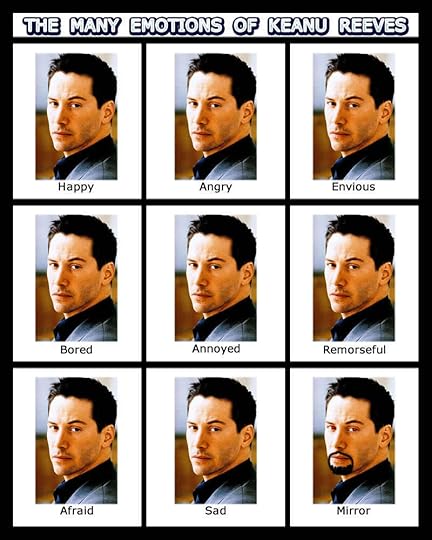
Credit here
So in honour of 47 Ronin, I’ve decided to come up with a couple of tips when creating characters. I call it the ‘For the love of all that is good and holy, don’t do it that way’ school of teaching.
Characters And Why You Should, You Know, Have Them
1. Archetypes are Fine… As A Starting Point
The Hero’s Journey has underpinned far too many stories to mention. In it the Hero meets many people along his quest, both friend and foe: the Gatekeeper, the Mentor, the Dragon, the Goddess. And these archetypes are totally awesome… as long as you build on the characters from there. If your Mentor is an old bearded dude who could slot into half a dozen fantasy books, then you’ve got a problem. Instead of painting by the numbers, take this archetype and make it work for you. Perhaps your mentor isn’t old. Perhaps he isn’t teaching your Hero willingly. Perhaps she has her own agenda. I love that we eventually find out that Dumbledore, who originally fit the wise old mentor archetype to a t, has actually had his own plans this whole time, and isn’t above using Harry to achieve them.
2. Kill the Madonna/Whore Dichotomy With Fire
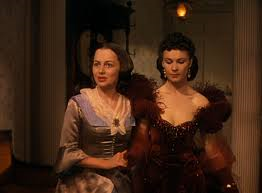
Why hello great example (and a great review of Gone With the Wind, too)
One of my most hated stereotypes, the Maddona/Whore Complex is, as TV Tropes defines it, “A pattern of thought that divides female-humanity into two mutually exclusive categories: Madonnas and Whores. The virtuous Madonna figure, possessing and protecting social virtue (and deploring sexuality) is an object of worship and everything that all females should aspire to be. However, sex is not part of this. Anyone who fails to live up to the Madonna standard is a Whore driven exclusively by sexual desire and (therefore) lacking in morality and humanity.
47 Ronin has a blatant example of this in its two main female characters: Mika and the Witch. Mika is the daughter of a lord, and has shared a chaste but fervent love with Kai since they were children. She is defined as a daughter and a wife (the bad guy wants to marry her), and it is partially this potential loss of honour at her marriage to Lord Kira that spurs the plot forward. Contrast her with the Witch, a character not even given her own name, but characterised by her obedience and love for Lord Kira, her shapeshifting abilities, and little else. Mika is always dressed perfectly, with fastidious hair; the Witch is a slovenly dresser with hair always in disarray. In one scene, the Witch invades Mika’s bedchamber, where she is trussed up under a blanket, and rubs herself over Mika. You don’t have to be Sigmund Freud to see what they were going for.
As a woman who also writes, I like to think that I write women well. I try to treat them like characters first and women second. I haven’t consciously made any decisions about what they should do or have happen to them based on ‘what a woman would do’. They do what Tuesday would do, or Hester would do. Their gender is secondary. Therefore when I see a story take female characters and give them few defining features other than broad gender stereotypes, well, it gets me a little hot under the collar.
For a more positive example from my contrasting Universal movie, The Mummy, Evelyn Carnahan is passionate, studious, naïve, clumsy… and she still manages to fulfil the Damsel in Distress archetype. So, as I was saying in my first point, archetypes can still work as long as you don’t build them into offensive stereotypes.
3. If You Want Your Death Scene To Get An Emotional Reaction, Introduce the Character Before the Death Scene

It never stops hurting…
I’m going to be spoiling a character death in the 47 Ronin, so if you haven’t seen it yet, stop reading right now.
….
Are you gone?
….
Don’t say I didn’t warn you…
Basho, the portly Japanese comic relief character, saves the Mentor and goes down in a blaze of arrows, finally apologising to our Hero and dying nobly. Sounds pretty affecting, right? Well, it would have been… if he hadn’t only spoken his first significant words about two scenes ago. (Coincidentally, this was the moment that I went, “Ohhhhh, so he’s supposed to be our Comic Relief”.) We barely had time to know him as an audience and so, although his being shot full of arrows was admittedly pretty badass, his death scene barely registered.
Pro-tip, y’all… if you want people to care when your characters die, you have to give us more to care about than two lines of dialogue. Build them up, let them breathe, give them space on the page. Then, when it’s finally time for them to die, you’ll forever after be getting hate notes from fans for killing them off.
Again, using The Mummy as an example of this genre of movie doing it right: Captain Winston Havlock. Introduced as an aging pilot interested in the old glory days of war and drowning his sorrows in drink, he perks up when he hears that he might die flying Rick, Ardeth, and Jonathan to rescue Evelyn. Nevertheless, when he does (predictably) die, who didn’t get even a little choked up at Rick saluting him as he disappeared into the quicksand?
4. Give Your Villain A Story, Or, Heck, Motivation
All I know about Lord Kira is that he wants to kill Lord Asano for… reasons? I’m assuming he wants power, because – stereotypical as this assumption might be – the movie doesn’t bother giving him a better reason. We know little about Lord Kira other than that he works with a witch, looks smashing in big shoulder pads, and can fight.
Done right, villains can (and do!) steal the show. Often the readers/viewers are given a glimpse into what makes the villain the way that they are and this allows us to, if not identify with them, at least understand where they’re coming from. For example, I’m a big fan of Orphan Black and, in the first season, Helena was treated as one of the main villains. But then, over the course of the series and definitely in Season 2, we see how horrifically she’s treated (even being locked inside a cage by her minder at one point) and how bad her childhood was and we come to see her as more than a One Note Villain. Give your villain a backstory and a reason for doing the things they do and you’ll be surprised at how interesting they can be. Remember, no one is evil in their own eyes.
Back to The Mummy, and the titular mummy, Imhotep, has a waaaay more developed story than Kira: he fell in love with the pharaoh’s mistress and wants to bring her back to life so that they can live together forever. Knowing that pretty much all he does is for love makes me a little sad at Imhotep’s inevitable defeat. Kira? Eh. Did not care a jot beyond the fact that know his kickass wardrobe will go unworn.
And that’s about it for now. As I’ve hopefully given you a glimpse of, it’s possible to learn things about the writing craft from even the most incompetent of movies. So go out and watch all the schlock you want under the guise of research. 
Let me know your favourite guilty pleasure by leaving a comment or writing to me at kabarkerwrites [at] gmail [dot] com.
May 22, 2014
Worldbuilding101: P…P…Politics
Politics. A word that sends people running or gets them screaming, it’s a vital part of your worldbuilding. Today I’m just going to give you a very basic rundown of some of the different political systems that emerge as possibilities when you create your fantastical countries.
1. Monarchy
The first and arguably the most common of all political systems found in fantasies. Whether it comes from the noble images of Charlemagne or King Arthur, there’s a mystical, timeless quality about monarchies that is no doubt attractive to fantasy writers. The concept is pretty basic: the political power is passed down through a genetic line. Where it gets fun is how you choose to do this and how much power your kings and queens have. Here’s a couple of ideas:
- The throne is passed to strongest/most worthy/smartest heir. This gives you the option of having trials, of sibling competing against sibling, of poison and intrigue. It gives you the chance to discover what your ruler and, in direct response, your country values the highest.
- Joint-rule. What if the king and queen had four children and didn’t want to leave the throne to just one? They leave the kingdom to all their heirs as a joint-rule, perhaps with the stipulation that each of them oversee a different aspect of ruling eg. finance, food production, defence, art and culture. Would this council system work or would the kingdom fall to petty in-fighting?
- The throne must pass to a different family each generation. Here the kingdom’s health and stability would be less for the reason of creating a dynasty and more for each ruling family trying to prove that it flourished the most in their time of ruling. Would families ally with each other, swapping the rule back and forth each generation? How would the rulers instil a sense of cohesion and pride in their people when they’re serving under many different families?
2. Dictatorship
 A great dictator or the greatest dictator?
A great dictator or the greatest dictator?
The favourite haunt of villains. It’s so easy to make them absolute despots in charge of shivering peasants, but remember that most dictators are benevolent leaders in their own minds.
In a dictatorship, one person (or group) holds all the political power. They are often backed by an army. Protests are dealt with swiftly and without mercy. The country is generally held together by powerful ideologies.
The fun part comes when you look at all the possibilities that a completely made-up world brings. Look at the ideologies, for example. You could have a dictatorship able to keep such absolute power because she defended her people against an external force, such as dragons or a malevolent spell or another race. The few people who managed to survive are frightened and cling to this woman, who they view as their saviour. If the food gets scarce and dissenters mysteriously start disappearing, well what’s all that compared to the fact that they’re still alive?
I’d love to read a story about your typical fantasy hero winning the throne at the end of their quest and slowly descending into becoming a dictator, because surely they know what’s best for their people… after all, they’re the Chosen One.
3. Democracy
 You tell ‘em, Dennis.
You tell ‘em, Dennis.Because sometimes people realise that, in the immortal words of Dennis the Peasant, strange women lying in ponds distributing swords is no basis for a system of government.
A democracy is when the people govern. Leaders are elected, everyone gets a voice, and all is right with the world. Whether or not this is true is up to you to decide.
I haven’t come across too many fantasy countries being run by democracy, so if you know of any, please let me know in the comments. But this just gives you even more free reign as a writer.
This type of governance would probably make more sense for a society that is more developed or established. People living in violent, war-filled times when their neighbours are trying to kill them don’t generally then put the power to rule in those neighbour’s hands.
4. Aristocracy
The rule of the aristocrats, those who have the most. This could be the most money, as with the original definition, the most knowledge, or the most magical power. The key here is that those who have it all are in power.
Most monarchies have traditionally been aristocracies as well. When King John lost absolute monarchical power by signing the Magna Carta, the power went to his barons, not his peasants.
Again, this is a great time to decide what is the most important to your kingdom, because this is going to affect which group comes out on top in an aristocracy.
5. Meritocracy
And finally, last but by no means least: meritocracy. It’s a concept that finds its origins in Confucian teachings, and basically means the belief that political power should be in the hands of those most worthy, or with the most merit.
For many countries, this has come to mean those with the most education, and has led to places of learning aiming to give its students a rounded and moral education that will create worthy political leaders. Here in Australia, for example, where I’ve heard it said that class divisions are based not so much on wealth but rather education, it shows up in the ideas of equality, giving everyone a ‘fair go’, and the sacred right of ‘mateship’.
I tend to think that it’s a great idea in concept, but impossible in execution, rather like communism and a true utopia. People will be people. There will always be corruption and those happy to game the system. But this is a perfect time for you, in your worldbuilding, to create a country where meritocracy really could work… the important thing to think about is why.
Actually, that’s a pretty good way to bring my Worldbuilding101 to a close: if you ever want to dig deeper into your world and the people within it, just ask why.
*
I’m sure there’s many other political systems that I haven’t covered. Please let me know your favourite political systems in the comments or drop me a line on kabarkerwrites [at] gmail [dot] com.
Next up I’m going to be looking at structure, plot, and all the fun little snarls you can get in when you actually have to write the darn book.
May 14, 2014
Worldbuilding101: Technology and Time Periods
Speaking of 80s power ballads (and crappy segues), it’s time to look at technology and time periods in fantasy societies. This is probably one of the more obvious marks of your society, and it can completely change the feel of your work, so it’s something you should think long and hard about… because it’s going to influence everything from your transportation options to the kind of lighting in your hero’s home.
Broadly speaking, there are three main technological eras that fantasy novels tend to be set in: Pseudo Ancient Greece, Ye Olde Medieval; Industrial-Revolution-with-the-numbers-filed-off.
1. Pseudo Ancient Greece. This tends to crop up a lot when dealing with the mythical past. A LOT of fantasy lands seem to be stuck in an age of decay, where things haven’t changed for thousands of years, and ruins of once-grand civilisations litter the countryside. These ancient civilisations tend to share a lot of similarities with Ancient Greece and Rome – impressive engineering skills, enlightened society, all-encompassing culture. See Tolkien’s Numenor as the most famous example. I think, as a society, we’re fascinated by the mysterious past. Atlantis, Avalon, El Dorado: these cities have set our imagination on fire, and I’m not surprised that this echoes in our writing.
When the pseudo ancient culture is not in the fantasy land’s distant past, but rather it’s future, this tends to intersect with the sword-and-sorcery genre (Robert E. Howard’s Conan series being the most famous). Here, though, there is less emphasis on enlightenment and more on the bloody battle to survive. You’re more likely to have warring tribes, primitive technology, and strange and deadly magic. If you’re interested in writing this level of technology, I’d suggest reading about the Dark Ages in Europe, as this is the period it most corresponds with.
[And although it's not technically relevant to a technological discussion, check out Victoria Hooper's awesome breakdown of how ancient Greek mythologies influence modern fantasy]
2. Ye Olde Medieval. This is probably THE stereotypical time period that people most jump to when they think of fantasy. You’re looking at castles, travelling by horseback, grand feasts with boars roasting over fires. Think middle-ages Europe. Tolkien mostly borrowed from this time period (although his hobbits seem to live a comfortable 18th century life), and authors from George R.R. Martin to Christopher Paolini have put their own spin on it.
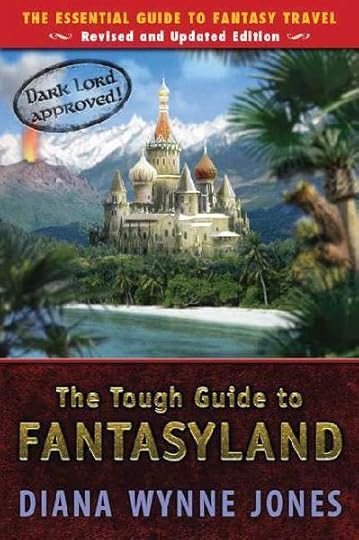 Also, this… the leading cause of headdesks among writers new to the fantasy genre
Also, this… the leading cause of headdesks among writers new to the fantasy genreThis period of history has enormous potential for storytelling. What fascinates me about it is that it’s probably the last time when the level of technology was low enough for magic to still be a viable force in many people’s mind. It was a time of unlimited possibility… here be dragons, as the maps said. Thunder could be gods warring with each other, and earthquakes a great serpent writhing in the earth. This gives you great scope in the creation of your fantasy world… and an amazing chance to take this concept and brand it with your own particular twist. George R.R. Martin, for example, took the generic Ye Olde Medieval concept and made it his own with his emphasis on brutality, the lack of magic (though it does seep in more and more in the later books), the complex inter-family politics. Writing in this time period gives you free reign to do the same.
Read widely – histories, politics, geography. You’d be surprised how developed the medieval period actually is. Fireworks date back to 7th century China, Constantinople was a thriving metropolis of learning and trade in the 12th century, and Columbus started out on his famous voyage in 1492.
3. Industrial-Revolution-with-the-numbers-filed-off. This is the time period that I tend to write in. Its greatest influence is, obviously, the Industrial Revolution. You’re looking at a time of great industry, a mass exodus of workers from the country to the cities, reliable transportation such as carriages and especially trains (with steampunk works often including zeppelins), gas lighting, sometimes even telegraphs. It’s probably the hardest to write in as it relies on a lot more research, which can be a burden or a blessing depending on your feelings about poring over large (and sometimes incredibly dry) tomes.
I really feel that you need to have at least a cursory understanding of the 19th century if you’re going to borrow from it when it comes to the technological level of your fantasy world. I’d recommend Niall Ferguson’s Empire: The Rise and Demise of the British World Order and the Lessons for Global Power, and especially The Victorian House by Judith Flanders, which I found a delightful and surprisingly funny rundown of Victorian society by breaking it down room by room.
As you can probably see, looking at technology and time periods can mean a lot of research. But it’s research that’s going to lay the foundations for a truly unique fantasy book.
Next up is a quick overview of the common systems of governance. If you have a favourite time period you like to draw inspiration from, please let me know either in the comments below or by emailing k.a.barkerwrites [at] gmail [dot] com.
April 1, 2014
Disney heroines – why don’t they get to vanquish the bad guy?
I love Disney. It may not exactly be cool to admit that, but then I’m not particularly cool, so who cares? Ever since I was a kid, I’ve been entranced with the colourful pictures and good-vs-evil stories that the House of Mouse put out. First the classics like Sleeping Beauty and Cinderella, and then through their renaissance in the early nineties, and finally even following them into their post-renaissance early 2000s slump. (Though I maintain they still made some awesome movies during this period. Treasure Planet, anyone?)
So it wasn’t a surprise that, when I was feeling sick on the weekend, I grabbed a Disney movie to cheer myself up. The Little Mermaid, namely: the 1989 movie that is widely considered to have revitalised Disney, started its renaissance, and kicked off the official Disney Princess line up to boot. And it’s still an amazing movie. Glen Keane’s character designs for Ariel are stunning; the music is inspired; the story is surprisingly emotional for following around someone who can’t speak for the vast majority of the time.
But the ending niggled away at me long after the closing credits played… because the heroine of the movie, Ariel, really had remarkably little to do with vanquishing Ursula.
 “Don’t mind me – I’ll just cower here for a while.”
“Don’t mind me – I’ll just cower here for a while.”Instead, she has to be rescued by Eric, who comes in to save the day with a well-placed bowsprit right in the calamari. Now I’m not meaning to discount Ariel – her curiosity, stubbornness, courage, and mischievousness all place her as a great character – but coming at it from a writing aspect, it still annoys me.
The basic conceit of a narrative is generally: there is a protagonist. Protagonist wants something. Protagonist is blocked from getting something by an antagonist (sometimes themselves or nature, but most often another person/organisation). Protagonist overcomes the odds to defeat the antagonist and gain their heart’s desire.
Granted, this is highly simplified, but hopefully it demonstrates my point. Ariel is undoubtedly the protagonist of The Little Mermaid. It is her actions (dreaming of the world above and striking a deal with Ursula) that start the plot. So surely she should be the one to defeat the antagonist, right?
Apparently not.
This revelation led me to revisit all my old favourite Disney movies to see just how many of their protagonists – specifically the heroines – actually defeat their antagonists.
Disney’s official line-up of princesses is: Snow White, Cinderella, Aurora, Ariel, Jasmine, Belle, Pocahontas, Mulan, Tiana, Rapunzel, and Merida. I’m only going to look at movies where these princesses could be considered the protagonists (sorry, Jasmine!):
Snow White – Not in the slightest. Snow White’s still snoozing while the dwarfs chase after the Evil Queen, causing her to fall off a cliff in the first instance of Disney’s famous ol’ falling death.
Cinderella – This is trickier as Tremaine is the antagonist and Cinderella technically doesn’t do anything to defeat her. She does, however, request to try on the class slipper and produce a second shoe when her stepmother causes the first to be broken, so I guess she gets points for that.
Sleeping Beauty – Okay, this one’s a bit iffy. Though we follow Aurora throughout the story, I’d argue that the protagonists are actually the fairies, and if this is the case, then they do help defeat the antagonist in the form of enchanting Phillip’s sword.
The Little Mermaid – Nope. Trying not to be fried by the trident while Eric spears Ursula in the stomach.
Beauty and the Beast – Not particularly, as Gaston is hoisted by his own petard.
Pocahontas – It’s John Smith’s actions being wounded saving Pocahontas’s father that lead to the sailors realising how despicable Ratcliffe is.
Mulan – Arguably the first (and the biggest) step in creating heroines who are actively involved in defeating their antagonists. Not only fights against Shan Yu (twice!), but comes up with the plan that ultimately defeats him. Interestingly, though, it’s Mushu who technically kills him with the fireworks.
The Princess and the Frog – The first Disney princess to definitively kill their protagonist via the rather Anastasia-like ending of destroying the bad guy’s reliquary/source of power.
Tangled – Along with the subtler villain, this movie also has a subtler climax. Don’t get me wrong, we still get the trademarked Disney Villain Falling From Tall Things…
 “I’m a villain in a Disney movie. I should have bought a condoooo…”
“I’m a villain in a Disney movie. I should have bought a condoooo…”
… but the true defeat of the antagonist comes in Rapunzel recognising Gothel’s love as possessive and destructive and rejecting it. (Though again we have the wacky sidekick doing the actual killing.)
Brave – Merida figures out how to break the curse, but leaves the actual defeat of Mordu to her mum. Which gets points from me because you don’t often see badass (or alive!) mums in Disney.
As of this writing, the sisters from Frozen haven’t been officially added into the Disney princess lineup, though I’m sure it’s coming. Which is great because Anna and Elsa are fantastic representations of active protagonists who have their own agencies and influence their own fates.
So from this list it’s kind of sad the lack of heroines who play an active role in defeating their villains. I’d expect passive heroines from the early movies, but it surprised me that so many from the Disney renaissance were still not involved in their final battles.
Now the problem I have with this isn’t necessarily because it’s sexist, but rather because it’s narratively unsatisfying. For most of these movies, we’ve identified with Ariel or Belle or Aurora. We’ve watched them go through dangers and trials and we’ve hated the villains for hurting them. We root to see the villains finally receive their comeuppance at the hands of our noble heroes… and then to not get that moment of catharsis feels rather like a let-down.
Thankfully this trend seems to be ending, if the last couple of Disney Princess movies are any indication. Just don’t get me started on Disney’s reluctance to show their protagonists killing the villain…
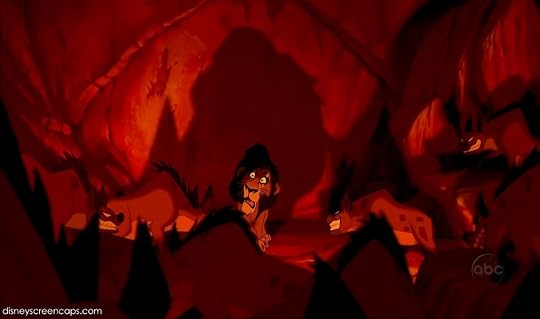 Seriously, even in The Lion King, we don’t get Simba delivering a smackdown on Scar. Name me one protagonist who kills their villain. I can only think of Jim with Scroop in Treasure Planet.
Seriously, even in The Lion King, we don’t get Simba delivering a smackdown on Scar. Name me one protagonist who kills their villain. I can only think of Jim with Scroop in Treasure Planet.


